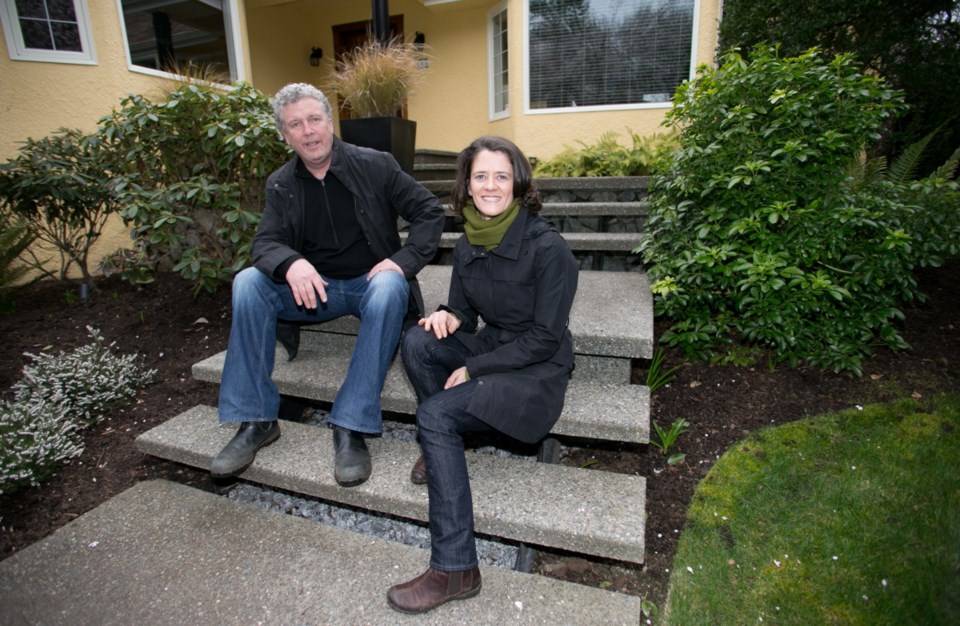Real-estate agents know the importance of curb appeal in selling a house. The term comes from how attractive a house looks to a prospective buyer from the street. A house that make a favourable first impression will typically result in househunters asking an agent for a look inside.
A home’s landscaping is an intrinsic, if sometimes neglected, part of the overall look of a house. While many sellers focus on sprucing up the interior in anticipation of putting a house on the market, landscape designers point out that improvements to the yard can improve a home’s value and result in a faster sale.
Landscaping also includes “hardscaping” — fixed items such as sidewalks, pathways and retaining walls on the property.
“The front garden is an important element of any house,” says Catherine Turk of Turk Landscape Design. “With the right choices, people can fall in love with the house without even entering it.”
She says that the most important element is how well the grounds are maintained. Any house will look rundown if the plants on the property are overgrown or the pathway is in need of repair.
“Improving the curb appeal of a house could be as simple as removing a tree or cutting back on mature shrubbery,” says Turk, who has operated her landscape-design business with Marty Hart for 10 years. “The plants should be in scale with the size of the house.”
One of the simplest ways to increase the appeal of a house may be to add a few strategically placed flowers and shrubs. But there are some seasons bereft of colour in nature.
“Year round, people can improvise by introducing coloured glazed pots in the yard,” says Duane Ensing, principal of Duane Ensing Landscape Design, who has designed and built hundreds of landscapes in Victoria. “They can be in colours that match the house.”
They can easily be filled with a number of evergreen plants that can survive our mild winters.
Ensing suggests:
• Don’t plant invasive species; they will eventually take over a garden and look messy. Invasive species are also difficult to remove once established.
• Don’t plant trees too close to a house. Not only will the roots get in the drain tiles, some will grow too tall and shade the house. A large tree will likely shed leaves or needles into the roof gutters.
Instead, he suggests:
• Live in a house for a year before making plans. Study where the sun shines, how the wind blows and if there are deer around.
• Augment the garden with new soil to create mounds in places where the lawn has been reclaimed. Not only will the mound give new plants more height, the nutrients in the fresh soil will give young plants a healthy boost for the first few years of their lives.
Both designers have seen increasing public interest in native-plant landscapes in recent years.
“Not only do they naturally require less water,” says Hart, “they are also non-invasive and many are hardy in seaside areas.”
He says many people are attracted to native plants, such as grasses, for their textural contrasts as well as how they work with hardscaping elements, such as the use of large boulders.
Plants should be chosen to complement each other, says Turk.
“Typically, plants that like acidic soil will go well with other plants that prefer the same soil.”
The same recommendation applies to colour. She strives to group plants of the same hue together — plants with colours in the hot palate separate from plants with a cool colour palate.
Flowers in the spring are predominantly pastels and softer shades, with blossoms in the summer more vibrant. With the help of a landscape gardener, a homeowner should be able to create a garden with year-long interest, using texture and colour even when flowers aren’t in bloom.
Turk says clients are asking for a more timeless look, with pruning to enhance the natural shape and form of the plant, rather than a more manicured look.
While some properties suffer from too few plants, others are overrun with them. The prospect of inheriting a high-maintenance yard can scare people away, as well.
“We are lucky to live on the West Coast where we are blessed with lushness,” Turk says. “Unfortunately, it leads to overgrown gardens. More and more people are asking us to help them eliminate the clutter without stripping away the desirable plants.”
